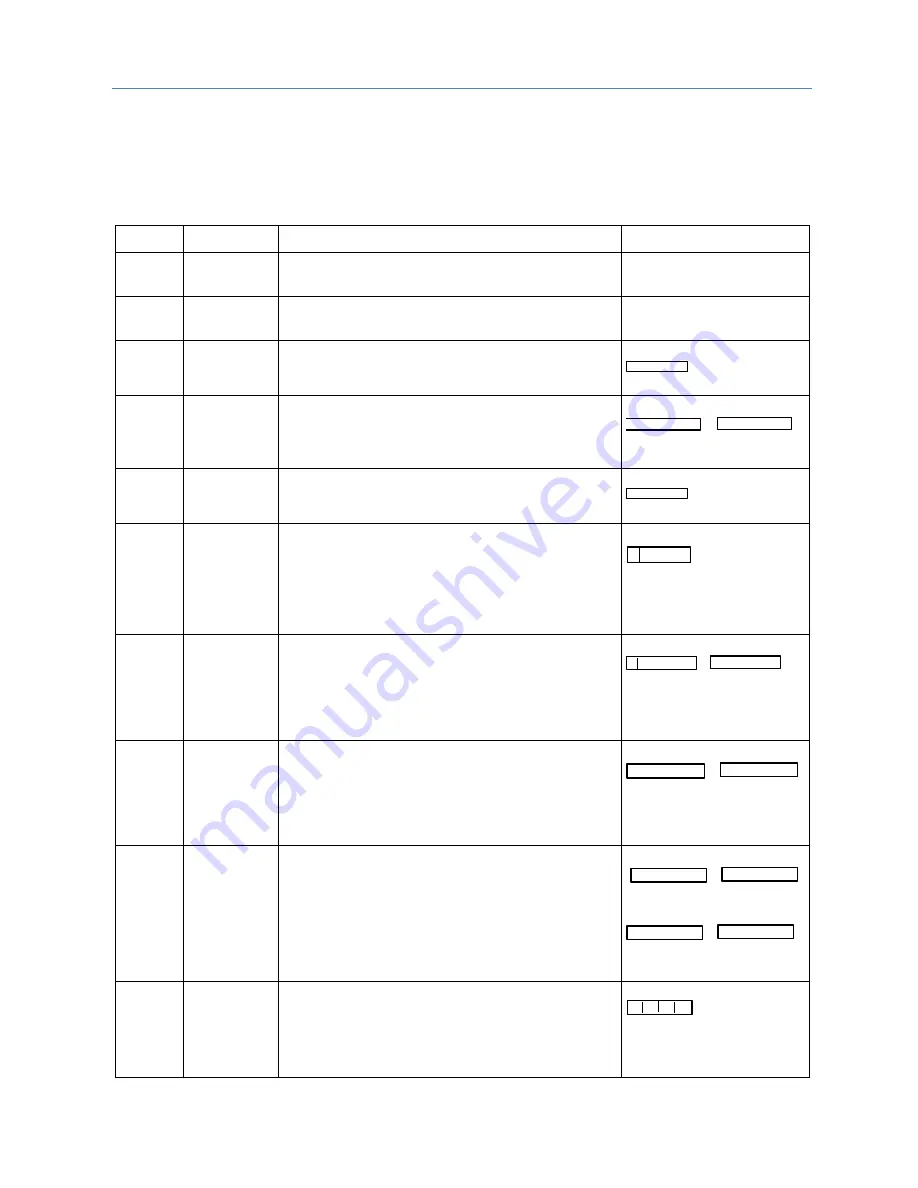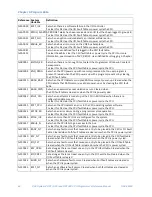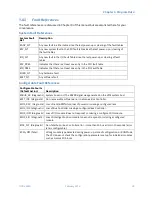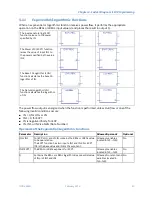
Chapter 3. Program Data
GFK-2950C
February 2018
51
3.9
How Program Functions Handle Numerical Data
Regardless of where data is stored in memory
–
in one of the bit memories or one of the word
memories
–
the application program can handle it as different data types.
3.9.1
Data Types
Type
Name
Description
Data Format
BOOL
Boolean
The smallest unit of memory. It has two states: 1 or
0. A BOOL array may have length N.
BYTE
Byte
Has an 8-bit value. Has 256 values (0
–
255). A BYTE
array may have length N.
WORD
Word
Uses 16 consecutive bits of data memory. The valid
range of word values is 0000 hex to FFFF hex.
Register
1
(16 bit states)
16
1
DWORD Double Word Has the same characteristics as a single word data
type, except that it uses 32 consecutive bits in data
memory instead of only 16 bits.
Register 2
32
Register 1
16
17
1
(32 bit states)
UINT
Unsigned
Integer
Uses 16-bit memory data locations. They have a valid
range of 0 to +65535 (FFFF hex).
Register
1
(Binary value)
16
1
INT
Signed
Integer
Uses 16-bit memory data locations, and are
represented in 2’s complement notation. The valid
range of an INT data type is
–
32768 to +32767.
Register 1
(Two’s
Complement
value)
16
1
S
s=sign bit
(0=positive, 1=negative)
DINT
Double
Precision
Integer
Stored in 32-bit data memory locations (two
consecutive 16-bit memory locations). Always signed
values (bit 32 is the sign bit). The valid range of a
DINT data type is -2147483648 to +2147483647
s=sign bit
(0=positive, 1=negative)
REAL
Floating
Point
Uses 32 consecutive bits (two consecutive 16-bit
memory locations).
The range of numbers that can be stored in this
format is from ±1.401298E-45 to ±3.38.
For the IEEE format, refer to
Register 2
32
Register 1
16
17
1
(IEEE format)
LREAL
Double
Precision
Floating
Point
Uses 64 consecutive bits (four consecutive 16-bit
memory locations).
The range of numbers that can be stored in this
format is from ±2.2250738585072020E-308 to
±1.7976931348308.
For the IEEE format, refer to
Register 2
32
Register 1
16
17
1
(IEEE format)
Register 4
64
Register 3
48
49
33
BCD-4
Four-Digit
BCD
Uses 16-bit data memory locations. Each binary
coded decimal (BCD) digit uses four bits and can
represent numbers between 0 and 9. This BCD
coding of the 16 bits has a legal value range of 0 to
9999.
Register 1
(4 BCD digits)
13
1
5
9
4
3
2
1
s
Register 2
32
Register 1
16
17
1
(Binary value)
Summary of Contents for PACSystems RSTi-EP
Page 357: ......
Page 466: ...Chapter 9 Diagnostics GFK 2950C February 2018 451 ...
















































